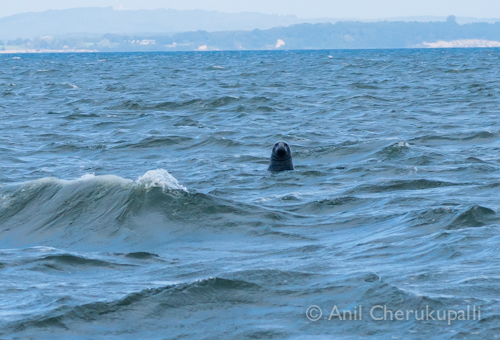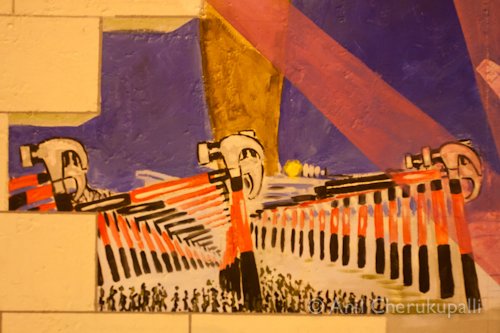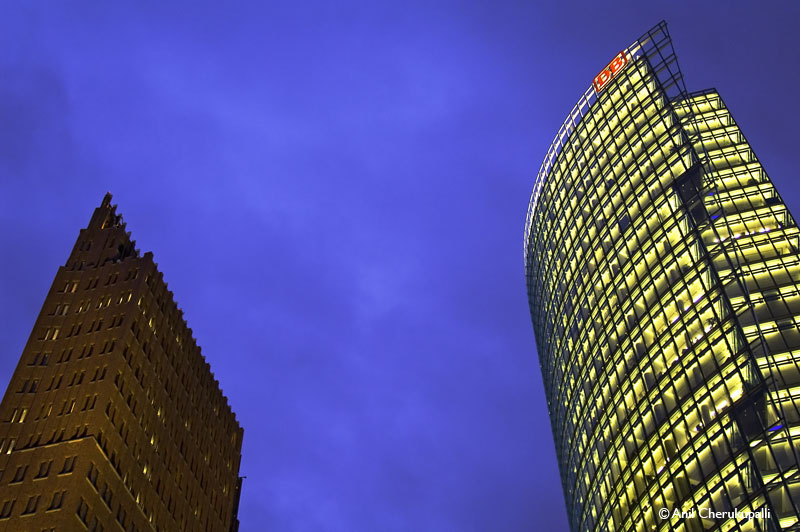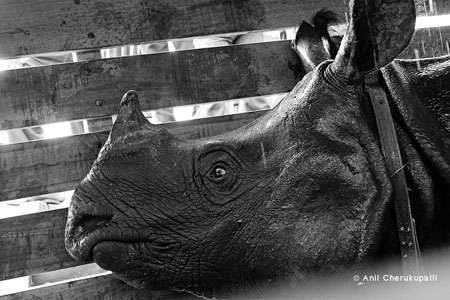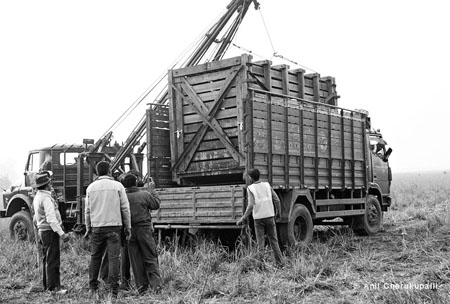‘You don’t have to heal the children in Jenin. We didn’t try to heal their violence. We tried to challenge it into more productive ways. And more productive ways are not an alternative to resistance. What we were doing in the theatre is not trying to be a replacement or an alternative to the resistance of the Palestinians in the struggle for liberation. Just the opposite. This must be clear. I know it’s not good for fundraising, because I’m not a social worker, I’m not a good Jew going to help the Arabs, and I’m not a philanthropic Palestinian who comes to feed the poor. We are joining, by all means, the struggle for liberation of the Palestinian people, which is our liberation struggle. . . . We’re not healers. We’re not good Christians. We are freedom fighters.’
Mer Khamis puts this strongly and eloquently. And yet, the larger question persists. If the theatre work that Arna did with the children was indeed powerful, why did so many of those children choose shahadat (martyrdom) in the end? Was theatre only a short-lived idyllic dream that would shatter once the nightmare of their lives burst upon them? Juliano answered this question, not in words, but in action, by establishing the Freedom Theatre in an uncommon example of courage and commitment.
The Freedom Theatre
Arna Mer died of cancer in 1994. The building that housed her theatre was demolished during the second Intifada in 2002. Juliano Mer Khamis returned to Jenin in that year to trace the children who had been part of the theatre. This resulted in his film Arna’s Children. He found that many of them had died, and some died as the film was being shot. The film itself was highly acclaimed, if controversial.
Having made the film, however, Mer Khamis found he could not simply walk away. He must have asked himself the question: would it have panned out differently if Arna had not died and her theatre shut down? Would some of those children have continued in the theatre? Suicide attacks are the work of desperate young men, who see no future for themselves, no hope. Could theatre have provided them hope? And more: could theatre have created resources that would equip the children to resist the most oppressive of all occupations, the occupation of the mind? That was Arna’s project – to create a generation of young Palestinians who would resist the occupation of the mind with artistic resources. Mer Khamis expanded the agenda. He sought to sow the seeds of the third Intifada – a cultural intifada, which would be fought with art, poetry, theatre, cinema.
This is the grand dream that forms the foundation of the Freedom Theatre, established in 2006. But this meant that Mer Khamis would have to give up his own acting career. He did that. He loved acting, and for a while not acting felt like withdrawal. But then he got over it, and derived great joy and sustenance directing plays, and working with the kids, seeing them grow.
‘The Freedom Theatre will provide the children of the camp a tranquil environment to express themselves and create,’ wrote Juliano. Some of the key people involved in the establishment of the theatre, apart from Mer Khamis, were Zakaria Zubeidi, a former military leader of the Al Aqsa Martyrs’ Brigades, Jonatan Stanczak, a Swedish-Israeli activist and Dror Feiler, a Swedish-Israeli artist. A number of artists from across the globe have also gone and worked with the Freedom Theatre in the past five years.
Working in Jenin is not easy. Try doing an image search on the internet for ‘Palestine children’. Thousands of images show up – of children injured and dead, of boys throwing stones at Israeli tanks. Yet, strikingly, there is none of a park or a playground. Palestine is a country without a playground. Working with children in these circumstances poses its own challenge. ‘Each and every one of our students bears marks of bullet wounds, severe beatings, torture or psychological traumas. This is the language of the occupying power,’ Mer Khamis said in an interview. Israel has destroyed libraries, cultural centres, schools in the Palestinian areas, and has prevented people from one area to communicate with others. It is as if ‘the switch of light and life of the Palestinians was turned off,’ as Mer Khamis put it. Life under occupation is hard not simply because of the physical conditions of existence. The occupation oppresses the imagination and distorts the personality of children, it takes away their right to childhood.
Before the Freedom Theatre was established, many residents had not even seen a play, let alone taken part in theatrical activity. The theatre had to win the trust of the community, an incredibly challenging task, given that boys and girls work together, and the theatre often takes up issues that are considered taboo. ‘One of the aims of the Israeli occupation is to conquer and divide, and I am sorry to say that they are succeeding,’ Mer Khamis said. In addition, being under occupation means that the culture and identity of the Palestinians is also sought to be erased. Theatre helps restore a colonised people’s dignity and becomes a weapon in the struggle for equity and justice.
Zakaria Zubeidi is living testimony to how theatre can change lives. The former militant has given up arms, gained a full amnesty from the Israeli state, and has joined the cultural struggle against the occupation. As Mer Khamis put it, ‘Zakaria now devotes his life to pave the way for The Freedom Theatre in the hearts of the people in the Camp and protects it from negative elements that see the theatre as a threat to religious and/or traditional values.’ The Freedom Theatre today runs a three-year professional Theatre School programme, the only one of its kind in Palestine. In addition, it also runs regular photography and video filmmaking workshops. Visiting artists also offer workshops in different arts and skills. Over the past five years, the theatre has done incredible work, and hopefully Juliano’s comrades will find ways of overcoming the tragedy of his killing and continue the work.
The question, obviously, is who killed Juliano Mer Khamis. One would think that the Israelis would consider his work a threat. Maybe they did. But his work was equally a threat to the Islamic fundamentalist organisations in Jenin itself. The Freedom Theatre’s production of Animal Farm earned their ire because one of the characters is a pig. Alice in Wonderland challenges patriarchal authority. Someone had distributed pamphlets against the Freedom Theatre in Jenin and Mer Khamis was denounced as a Zionist agent. ‘It makes [the Islamic fundamentalists] crazy that a man who is half-Jewish is at the head of one of the most important projects in the Palestinian West Bank and it is just hypocritical racism,’ Mer Khamis said. ‘I have never been as Jewish as I am right now in Jenin. After all this work at the camp it would be extremely unfortunate to die of a Palestinian bullet,’ he added presciently. Unsurprisingly, the man arrested for the murder is a former Al-Aqsa Brigades militant.
A section of the ultra-left in India equates the anti-Americanism of Islamic fundamentalists in the Middle East with anti-imperialism. The killing of Juliano Mer Khamis, among other things, underlines the myopia of this approach.
Juliano-Safdar-Probir
Every history is unique, every tragedy singular. And yet, there are connections across decades and continents.
Juliano’s killing connects to another, some 22 years ago. On 1 January 1989, Jana Natya Manch (Janam) had gone to the outskirts of Delhi to perform our street play, Halla Bol (Attack!). The working class movement of Delhi was then on the upswing, and our play was in context of a massive strike. Most of the play was written by Safdar Hashmi, who also directed it. It had been a huge success, with the workers in various industrial areas picking up slogans from the play and using them in their own organising efforts.
As they began the play that morning, the actors were attacked by a mob led by a local goon who was also a small-time industrialist, and who had the protection of the ruling Congress party. The attackers came with iron rods and bamboo sticks. They also had guns, as the actors found later. The actors had nothing. They resisted with stones for a short while, allowing most of the actors to escape. But the respite was temporary. The mob came back and attacked CITU office where some of the actors had left their bags. Safdar and another actor, Brijender, held fast the gate, which allowed the rest to jump over the back wall and escape. In the end, Safdar ordered Brijender to escape, and in doing so must have realised that he wouldn’t be able to. They dragged him back to the place where we were performing, and beat him up with rods and sticks. All the injuries were to the head. When three actors reached that spot some 15-20 minutes later, he was unconscious and bleeding profusely. He was to die in hospital the following night. But Safdar was not the only person killed that night. They also killed a Nepali worker, Ram Bahadur, because they suspected him of hiding a trade unionist. He hadn’t, but they were in no mood to listen.
Safdar was 34 when he died. For his funeral on 3 Jaunary, some 15,000 people – artists, intellectuals, workers and ordinary citizens – poured out in the streets of Delhi. On the morning of the 4th, Janam went back to the same spot to complete the interrupted play, watched by thousands. Among the actors was the Janam veteran Moloyashree, also Safdar’s wife. That one performance galvanised thousands across the nation. Protest demonstrations took place all over India. 12 April, Safdar’s birthday, was declared Street Theatre Day by cultural activists, and there were more than 30,000 performances all over the country. The Safdar Hashmi Memorial Trust (SAHMAT) became a platform that brought together hundreds of artists and intellectuals from different parts of India on issues of larger concern. In particular, SAHMAT played a crucial part in the cultural/intellectual resistance during the six-year period (1998-2004) when the central government was led by the party of the Hindu right, the Bharatiya Janata Party.
Safdar’s killing, in turn, connects to another, back in 1974. Indira Gandhi’s declaration of the state of Emergency was still a year away, but in West Bengal, her party, the Congress, had unleashed terror against the Communists from about 1972. Curzon Park in Calcutta had become the site of weekly street theatre performances which critiqued State violence, imperialism (the war in Vietnam was on), etc. With a view to reclaim this little space, the government sent in the police on the day of the performance. The theatre group that was performing was called Silhouette, and Probir Dutta was one of its leading activists. The police caught him, and beat him to death.
The following week, Badal Sircar’s Michhil (The Procession) was performed in Curzon Park in protest against the police attack. The production drew actors from all the well-known Calcutta groups. A number of well-known theatre persons, including the communist actor-director-playwright Utpal Dutt, recited poems or read passages.
Every tragedy is singular. Probir Dutta was killed by the police, Safdar by anti-social goons, while Juliano appears to have been the victim of an Islamic militant’s bullet. Unlike Probir Dutta and Safdar, Juliano knew he was under threat. Juliano’s life, like that of Safdar, will inspire a generation.
Dying in Palestine
Life in Palestine is unlike anywhere on the planet. But death in Palestine is also unlike anywhere else. When Arna died, it was impossible to bury her. Mer Khamis narrated the story in an interview:
‘My mother could not be buried because she refused to be buried in a religious ceremony or funeral. Israel is not a democracy; it’s a theocracy. The religion is not separated from the state so all issues concerning the privacy of life—marriage, burial and many other aspects—are controlled by the religious authorities, so you cannot be buried in a civilian funeral. The only way to do it is buy a piece of land in some kibbutzim, which refused to sell us a piece of land because of the politics of my mother. . . . I had to take the coffin home. And it stayed in my house for three days and I could not find a place to bury her. So I announced in a press conference that she was going to be buried in the garden of my house. There was a big scandal, police came, a lot of TV and media [came], violent warnings were issued against me. There were big demonstrations around the house, till I got a phone call from friends from a kibbutz. . . . They offered a piece of land there. And the funny thing is that while we were looking for a place to bury my mother, there were discussions in Jenin to offer me to bring her for burial there, in the shahid’s [martyr’s] graveyard. They told me there was one Fatah leader, who was humorously saying, ‘Well, guys, look, it’s an honour to have Arna with us here, a great honour, the only thing is maybe in about fifty years’ time some Jewish archaeologists will come here and say there are some Jewish bones here and they’re going to confiscate the land of Jenin.’ [Laughs] They do it. Even if they find the Jewish bones of a dog, they take the place. . . . Every place they confiscate they find the bones of a Jew and that’s how they justify the ownership of the land, by finding bones.’
Like his mother, Juliano was bid farewell to on both sides of the divide. He was buried in the same kibbutz, next to Arna. Mother and son, artists and freedom fighters, shining lights in a dark world.
Palestine, more than any other place on earth, is an emblem of humankind’s conscience. Juliano Mer Khamis is the name of the belief that justice will win in the end. In this spring of the Arab revolt, Juliano will not be mourned. His courageous and creative life will be celebrated, his passion and integrity saluted. Juliano Mer Khamis is the name of a dream that will not be extinguished. As his own students put it:
‘The revolutionary message will not pass away. It will come storming the yellow sands and the mountains covered by almond trees … from here, from the Freedom Theatre’s stage, where men were and are made to be free and engaged in the cultural revolutionary battle for freedom. … In thousands of silences only one voice is raising up; it’s the freedom fighters’, to whom you taught how to carry the cultural gun on their shoulders. Juliano, your mother’s children have passed away, your mother, Arna, has passed away and so did you—but your children are going to stay, following your path on the way to the freedom battle, and we will go on with your revolution’s promise, the Jasmine revolution.
– Juliano’s children’
Sudhanva Deshpande is an actor and director with Jana Natya Manch, and works as an editor at LeftWord Books, New Delhi. He can be reached at
sudhanva@leftword.com.
[-] Show Less














